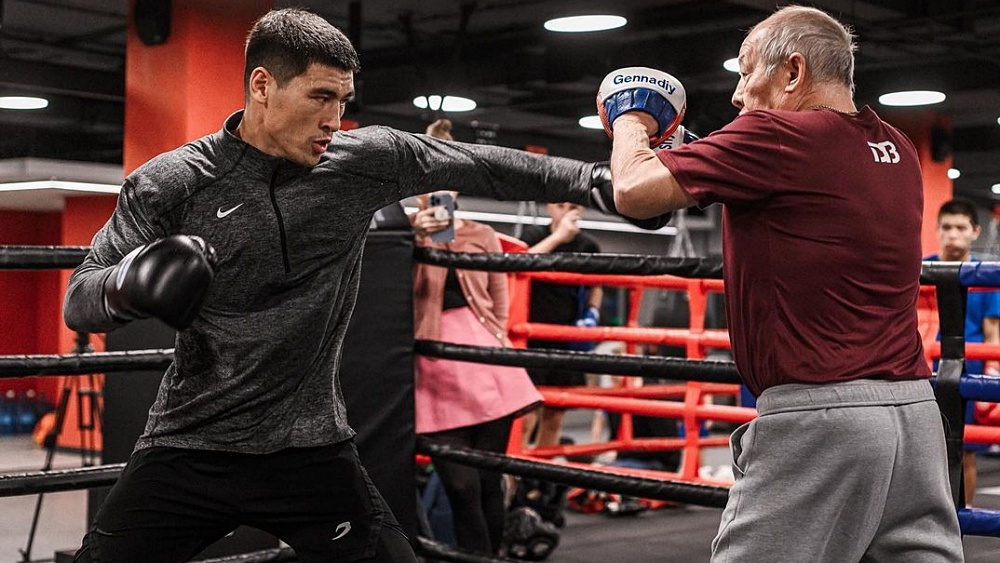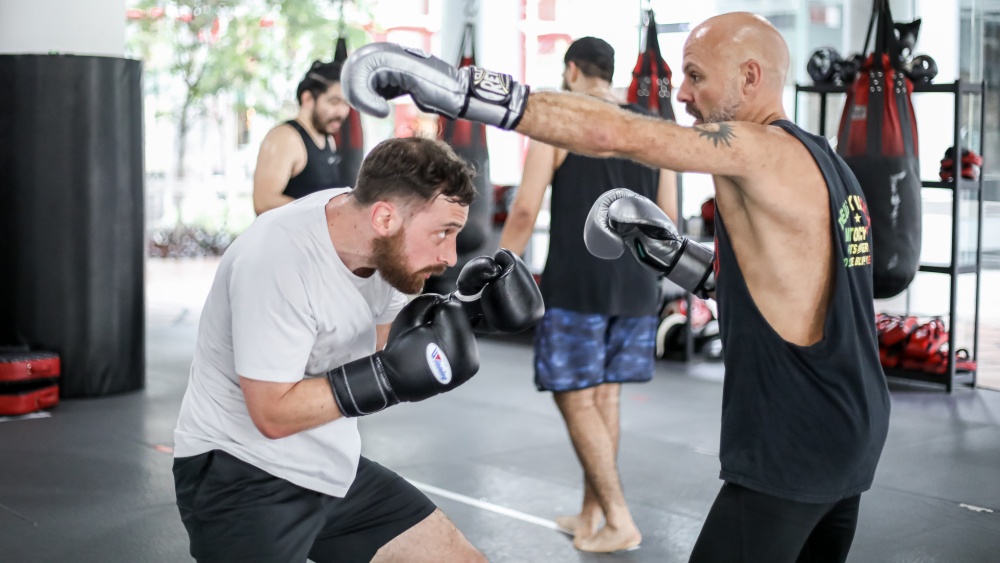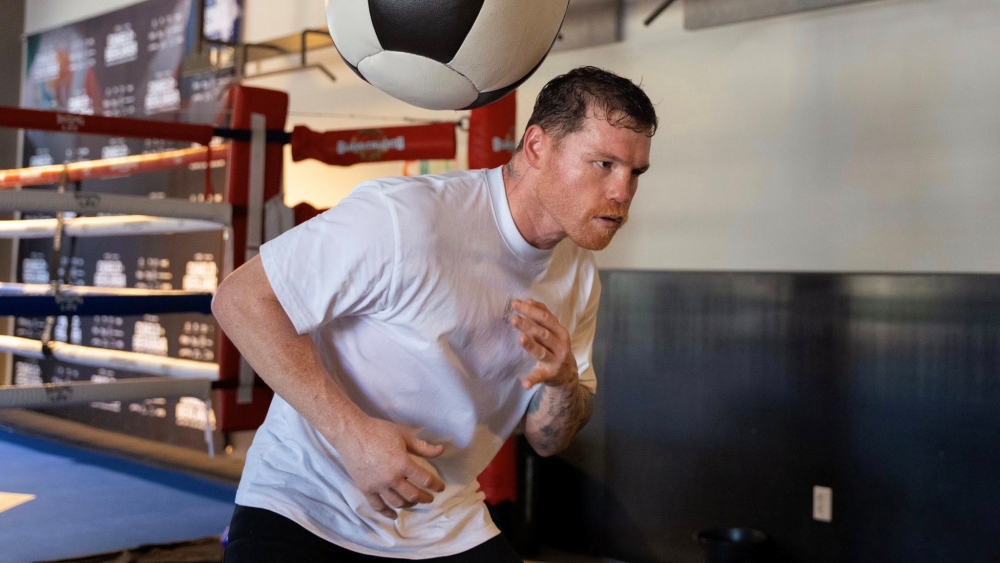Boxers must push themselves to their limits with red-zone training to ensure they have enough endurance to get through their fights. Boxing is a physically demanding sport, and you don’t want to run out of gas when someone is trying to take your head off with a hook.
Picture yourself in the middle of a fight while your lungs feel like they’re on fire and your arms feel like they weigh a hundred kilograms each. That’s the red zone, where many boxing fights are won or lost.
Regardless of how well-conditioned you are, some opponents will take you into deep water, and you might not have enough left to fight them off if you don’t regularly train in the red zone.
Why Every Boxer Needs Red Zone Training
Red zone training is about training your body to handle the pressure you might face during a fight. It’s one of the things any boxer can do to level up their boxing game.
The red zone refers to bringing your heart rate to 85% to 100% of its maximum capability. It requires you to operate your body near its maximum capacity, pushing your muscular and cardiovascular systems to their limits.
The red zone is where your decision-making abilities start to waver during a fight, where fatigue creeps in so bad you can barely keep your hands up to defend yourself. For a boxer, the red zone isn’t just a place they visit during their training; it’s where you need to learn how to survive. Expecting never to get tested to the point you reach the red zone is an unrealistic expectation for any boxer to have.
The deeper you can push into the red zone without getting too tired to fight, the more success you’ll have inside the boxing ring. You can even use the swarmer boxing style to capitalize off your incredible cardio and defeat opponents by forcing them to fight at a pace they aren’t comfortable with.
Red Zone Training vs. Steady State Training
Steady-state training activities like running have been a massive part of boxing training for decades, but they don’t raise your heart rate high enough to count as red-zone training.
Boxing demands short bursts of intense effort followed by brief rest periods where both boxers don’t throw much. Even the structure of boxing matches is more favorable to those who incorporate red zone training into their workouts since you fight for three-minute rounds and get to rest for a minute between them.
Red zone training helps adapt your body to the demands of boxing by improving your ability to recover quickly between intense bursts of effort. Red zone training also teaches your cardiovascular system to function more efficiently under extreme pressure. This makes it easier to stay mentally sharp and maintain good form during your fights, even if your body doesn’t have much gas left.
In other words, you must add red zone training to your workouts to be the last person standing when the final bell rings during your fights.
The Science Behind Red Zone Conditioning
Your body undergoes significant changes when you push yourself into the red zone. Lactic acid builds up in your muscles, your breathing gets more rapid, and your heart rate spikes. It’s your body’s way of letting you know you’re getting close to its limits.
However, you can delay this process with red zone training and train your body to operate effectively when it’s close to its max.
Some of the changes that go on in your body during red zone training include:
1) Increased VO2 Max
VO2 max is the maximum amount of oxygen your body uses during intense physical activity. The higher your VO2, the more oxygen your muscles can absorb, helping to delay fatigue. Red zone conditioning is one of the most effective ways to increase your VO2 max.
2) Improved Lactate Threshold
Your lactate threshold is where lactic acids start to build up in your muscles faster than your body can clear it out. Lactic acid leads to the burning, heavy muscle sensation during intense workouts.
Training in the red zone helps to raise your lactate threshold, allowing you to continue to throw punches correctly during your fights, even when the fighting gets intense. The higher your lactate threshold, the longer your muscles can work without giving out.
3) Increased Mental Toughness
Learning to perform in the red zone isn’t just a matter of how well physically conditioned you are. It’s also about how mentally tough you are. Training in the red zone requires you to push through discomfort, which teaches you to stay focused during your fights, even when your body is at its limits.
Incorporating Red Zone Training Into Your Workouts
Ready to make red zone training a part of your boxing training routine? Let’s explore some practical ways to increase your endurance in the red zone:
1) High-Intensity Interval Training (HIIT)
One of the most effective ways to improve your ability to perform optimally in the red zone is performing HIIT workouts.
HIIT involves alternating between short bursts of maximum effort and brief recovery periods. The idea is to push your heart rate into the red zone during each station, followed by a rest period that brings it down before moving on to the next intense exercise.
HIIT has become quite popular with fighters because of how much the short burst of effort mimics a boxing match.
A high-intensity interval training circuit could be as simple as 30 seconds of going all out on a heavy bag, followed by 30 seconds of rest. You can repeat this simple circuit six times to force your heart rate into the red zone.
2) Sprint Training
Sprints are another effective way to raise your heart rate into the red zone and you can easily incorporate them into your runs. Run as fast as you can for 20 to 30 seconds, rest for the same amount of time, and keep alternating.
3) Sparring

Sparring is another excellent way to get your heart close to its maximum output, and you also get to work on your boxing skills. Ideally, you want to pair up with a training partner you know will force you to fight hard.
Cardio Wins Fights
Red zone conditioning isn’t for the faint of heart, but it comes with many rewards since the outcomes of boxing matches are often determined by which fighter has the larger gas tank.
You may also like:

















